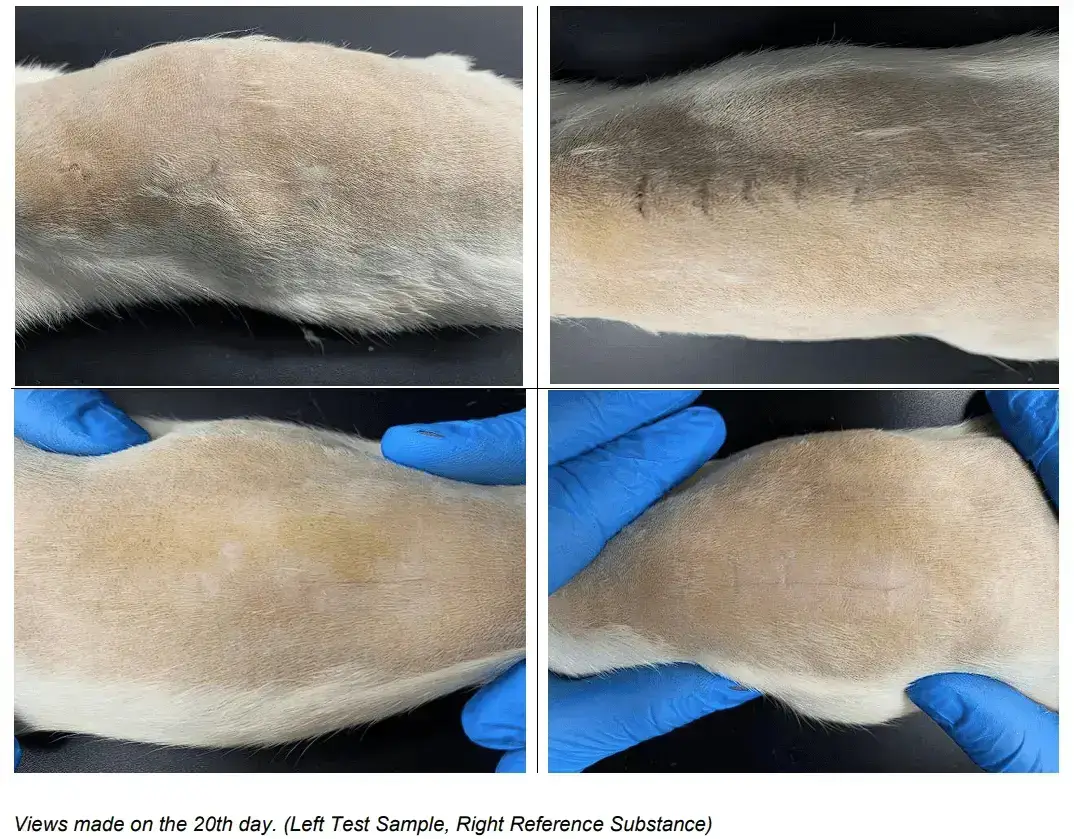
Pre-clinical Trials
Wound closure techniques have evolved significantly over the years, aiming to enhance tissue healing and minimize scarring. In the realm of medical advancements, one such innovation is the introduction of Sutrips, a novel suture technique which presents a promising alternative to the conventional interrupted suture wound closure method. In this experimental study, we delve into the intricate world of wound healing, pitting Sutrips against traditional sutures to discern their respective tissue healing effects.
Experimental Design and Objectives
The primary objective of this clinical study was to assess the tissue healing effect of Sutrips in comparison to traditional suture needle and thread under controlled in vivo experimental conditions. The experiment involved creating a wound in the skin tissue of Wistar Albino rats and monitoring the subsequent healing process.
Methodology
To execute this study, a preliminary tissue healing effect test was conducted on two male Wistar Albino rats weighing between 250-350 grams. Prior to the procedure, all operation materials were meticulously sterilized. The rats were anesthetized using ketamine/xylazine, and the hair on their back skin was shaved. The wound was incised on the dorsal region of the rats, and Sutrips were applied to one side while traditional sutures were used on the other. The healing progress was monitored, and observations were recorded on the 10th and 20th days post-application.
Findings and Results
Throughout the observation period, the test systems exhibited no adverse effects, such as changes in behavior, appetite, or appearance. No mortality or negative impacts were observed in relation to the criteria evaluated. The experiment yielded noteworthy findings that shed light on the contrasting effects of Sutrips and traditional sutures on tissue healing. In the experiment result analysis, the following observations were made:
Enhanced Cicatrix Effect:
When comparing the tissue healing effects of Sutrips and traditional sutures, it was evident that Sutrips exhibited a superior cicatrix effect. The wounds closed more effectively and exhibited improved healing compared to the reference group.
Faster Healing and Closure:
Despite the less frequent usage of sutrips compared to traditional sutures, the wounds treated with Sutrips displayed accelerated closure and faster tissue healing.
Aesthetic and Closer Healing:
Sutrips demonstrated a remarkable capacity for aesthetic and precise healing, surpassing the healing achieved with traditional sutures.
Conclusion
The experimental study on Sutrips wound closure versus traditional interrupted suture wound closure provides compelling evidence of the potential advantages of using Sutrips. The enhanced cicatrix effect, faster healing, and aesthetically pleasing outcomes observed with Sutrips indicate its potential as a game-changing wound closure device.
Upon reviewing the clinical trial’s findings, it becomes evident that Sutrips has successfully achieved its primary goal of wound closure. Additionally, it has demonstrated its ability to prevent wound infection and proved to be less invasive, requiring only three stitches compared to the conventional suture technique.
Further research and clinical trials are warranted to delve deeper into the long-term effects and broader applicability of Sutrips in various wound closure scenarios. As medical science continues to push the boundaries of innovation, Sutrips stands as a testament to the ongoing quest for improved patient outcomes and enhanced healing processes.


Recent Comments